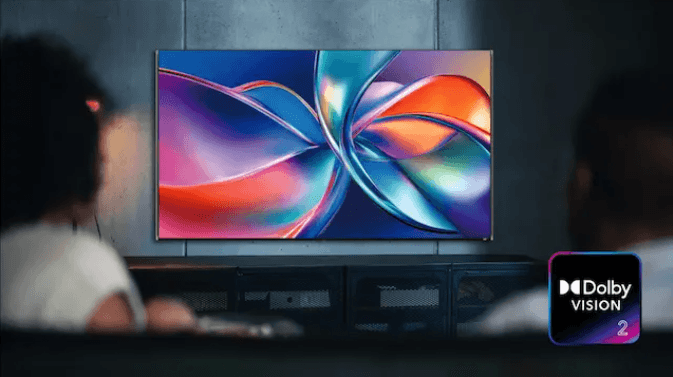
The first RGB LED TVs have already gone on sale courtesy of Samsung Electronics and Hisense, but the OLED-killing technology doesn’t come cheap. In fact, the most affordable models will set you back a five-figure sum!
However, we could soon see a selection of smaller, more affordable RGB LED TVs arrive next year, if Hisense keeps its newly-made promise.
Samsung's 115-inch Micro RGB TV and Hisense’s 116-inch RBG-MiniLED TV were launched last month, and despite the slightly different names they’ve chosen, they both feature the same RGB LED backlighting technology that will also debut in Sony’s flagship TVs next year. RGB LED uses thousands of tiny Micro LEDs to enhance zone dimming control and expand the colour gamut while improving energy efficiency, and it all adds up to much more realistic pictures.
However, the humungous size of these first RGB LED TVs means they cost a fair packet, with both companies slapping a £25,000 price tag on newest flagship sets. Hisense is also selling a slightly smaller 100-inch version of its RGB-MiniLED TV, but that still costs £15,000, so it’s not really much more affordable.
Those prices suggest that the OLED-killing RGB LED tech might be out of reach for the average consumer for some time to come, but that will soon change.
As reported by FlatpanelsHD, Hisense executives told the French language publication Les Numeriques at this week’s IFA Berlin 2025 event that the company is planning to launch its U9 series TVs by the middle of next year, with RGB LED models in 55-, 65-, 75-, 85- and 100-inch sizes, and they’ll be priced very competitively indeed.
For instance, the 55-inch Hisense U9 is expected to cost just €1,499 (around £1,300), and even the 100-inch version is well within many people’s reach with a price tag of just €4,999 (around £4,300). The 65-inch model will cost €1,799, the 75-inch version €2,499, and the 85-inch screen just €2,999. These are seriously tempting prices that a good chunk of the population should be able to afford.
Check out this video from HDTVTest's Vincent Teoh to see why we're so excited about RGB LEDs:
Hisense has already declared that the 116-inch and 100-inch RBG-MiniLED TVs will support Dolby Vision 2, which is said to be a "ground-breaking" evolution of HDR quality pictures, and the smaller U9 models will also get the same capability.
The enhanced picture quality of RGB LED makes these TVs the perfect displays for showcasing Dolby Vision 2 in all of its glory, and given that Hisense was selected by Dolby Labs as its launch partner, it makes sense that the U9 TVs will also be Dolby Vision 2 TVs.
This suggests that the U9 models may well come with MediaTek's latest Pentonic 800 chip, which is the first processor to support Dolby Vision 2, and is found in the bigger RBG-MiniLED TVs. Hisense hasn't said so, but it seems likely that Hisense's 2025 U8Q and U7Q Pro TVs may also get support for Dolby Vision 2 via a firmware update, as they're also powered by the same Pentonic 800 chipset.

According to Flatpanels HD, the U9 TVs will also feature Hisense’s Hiview AI Engine X technology and have 165Hz refresh rates, as well as the increasingly commonplace anti-glare coating. The company will unveil the TVs at CES 2026 in January, by all accounts, where we'll learn more about them.
It’s very unusual for a company to announce the prices of new TV models before they actually show us the TV, but Hisense appears to be wanting to make a statement of sorts, and perhaps throw down the gauntlet to some of its rivals.
That could well inspire the likes of Sony and TCL to rethink their prices, too. According to Omdia research director David Hseih, both companies plan to launch a broad range of RGB LED TVs next year, with sizes of 50-inches and up. With any luck, Samsung will launch smaller versions of its Micro RGB TV, too.
While we do expect to see more advances in OLED display technology next year, it’s looking more and more likely that RGB LED televisions could be the real showstoppers in 2026.